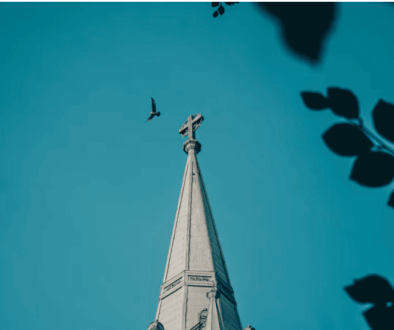Art and Prayer
In the Painting of the Annunciation, the simplicity of the lines, the Trinitarian presence, the blue vault, the look of confidence and jubilation of the Angel announcer who is dressed in a garment tight at the waist that falls in large folds that cover his feet, and the purity of the “Yes” that crosses his arms in a sign of humble acceptance has always captivated me. The redemptive moment of that afternoon in Eden when our parents, now submissive and repentant, were tempted by evil was beginning. The figures of the Archangel and the young maiden are delicate and convey sweetness and serenity. The colors are soft and provide delicacy to the characters. In this masterpiece of Renaissance art, everything invites to elevate the mind to that redemptive moment in which the Son of God is announced as the Savior of mankind. This painting has a devotional function towards Mary and contributes to the strengthening of the faith of those who look at it. It is said that its author, Guido di Pietro (Fra Angelico), never took up his brushes without first praying.
Some years ago, in the Convent of San Marco in Florence, I stood in front of The Annunciation for more than an hour, static, unable to move, immersed in its meaning. There was a hidden richness like a fountain from which flows a river of grace and in which the voice of God is heard. That day, I understood that sometimes what changes us is not what we do, but the time we spend with the Lord in prayer.
Art offers an infinite field for prayer; it creates spaces to listen to God. In this case, the work offers a moment in salvation history that we never finish meditating on, understanding or celebrating. The Virgin becomes closer, more sensitive and even corporeal. Looking at this painting, I can imagine and understand what happened. The experience of entering into the mystery of God is of overwhelming fruitfulness. Praying with art offers direct communication with reality; it suggests, evokes and does not force a single reading or interpretation.
Contemplating a work of art opens a space that points the way forward. In the biblical text (Luke 1:26-38), the space is enlarged, and questions arise to connect what is contemplated with life experiences. The Word of God is concretely incarnated, leaving an open space into which we can enter.
This image of the Annunciation invites me to get going, to move forward, to live Advent when the promises of Salvation arrive! Inwardly feeling and tasting these things is what fills my heart. In part, I owe this experience of profound transformation which moves the senses and uplifts the soul to my mother, who always guided me to look beyond and into the scenes of the paintings she showed me. Thanks to her, praying with art became easy for me. Praying with art means being able to encounter God and his message in the artwork. It is important to give the work of art its time and space, to admire it in silence, and to listen to what it wants to communicate to us. It means listening to what the Holy Spirit wants to tell me through it. Contemplation is an exercise in listening; praying with art essentially means contemplating and listening to what God is saying within us.
I hope to see again in person the painting of the Annunciation by Blessed Angelico, where Redemption begins in the virginal womb of the humble Servant of the Lord.
Paula Gómez Victorica was born in Buenos Aires, Argentina. She was a contemplative nun of the Order of St. Benedict for 20 years. She has lived in Massachusetts since 2001. Paula is a Certified Spiritual Director. She is now studying for a Post-Master’s Certificate in Ignatian Spirituality at the Clough School of Theology and Ministry at Boston College. She currently teaches Biblical Spirituality in asynchronous online courses at the same School. She serves as Director of the Faith Formation Program at St. Ignatius Parish, Chestnut Hill, MA, and also coordinates the Hispanic Community.




